The main varieties of the Nambu 94 pistol
Speaking of the varieties of any weapons it must be remembered that any classification is conditional and the number of different variations depending on changes in appearance, peculiarities of marking can reach several dozen.
We will try to consider and illustrate only the main varieties of the Nambu 94 pistol.
The early production period is characterized by some changes in the design of the Nambu Type 94 and the relatively high quality finish of the weapon. The period of mass production has minor differences, mainly related to the characteristics of the labeling. Pistols of the late production period are characterized by a sharp decline in quality and simplification of the manufacturing process.
The Nambu 94 prototype somewhat resembles the Nambu Web gun, but unlike other models, the trigger mechanism with an open trigger was used in the new weapon. The prototype has passed many tests and has changed quite a lot, both externally and in construction. As a result, the 94 model was adopted by the Japanese army in the 1934 year.
The early-release Nambu 94 pistols (let's call them the first version) is a weapon released from June 1935 of the year to January of 1939 (marked from 10.6 to 14.1). The photo shows one of the first pistols with a 8 serial number, released in June 1935.
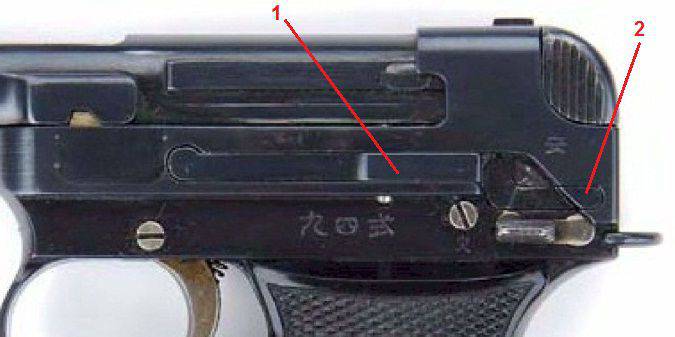
The difference of this gun from other weapons is noticeable if you pay attention to the shape of the trigger lever installed on the left side of the frame. The protrusions are visible in the middle part (1 figure in the photo) of this lever and at its end (2 figure).
On the right side of the frame, it can be seen that the milled pad at the back of the frame, in the place where the date of release of the weapon is applied, has an unusual shape. The milled area is larger than that of subsequent copies of pistols, even than a number of pistols of the early stage of release.
The early-release Nambu 94 pistol stores are nickel plated and have a flat bottom magazine shape. The leash of the store feeder of rectangular shape with a parallel notch. Nickel-plated magazines were manufactured until about the end of December 1941 of the year (marking on 16.12 weapons).
From August 1937 of the year (with markings starting from 12.8) a slight change is made in the design of the store and a stiffener appears on its lower lid.
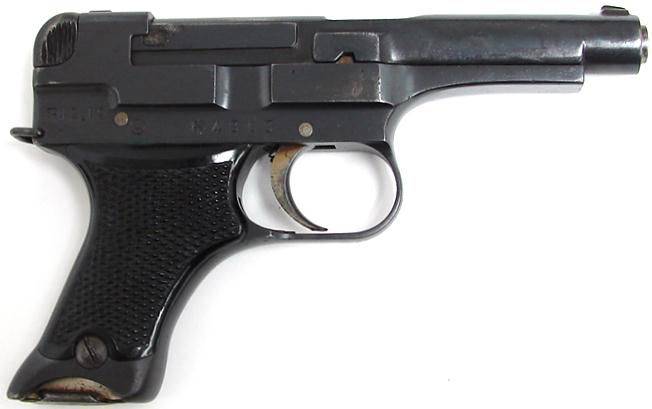
Prior to 1939, the monthly production level at the Nambu plant was very low - on average, 175 units. This means that no more than early release 7100 pistols were manufactured. As for the assembly, it should be noted that the early pistols were very well made and had a high quality finish.
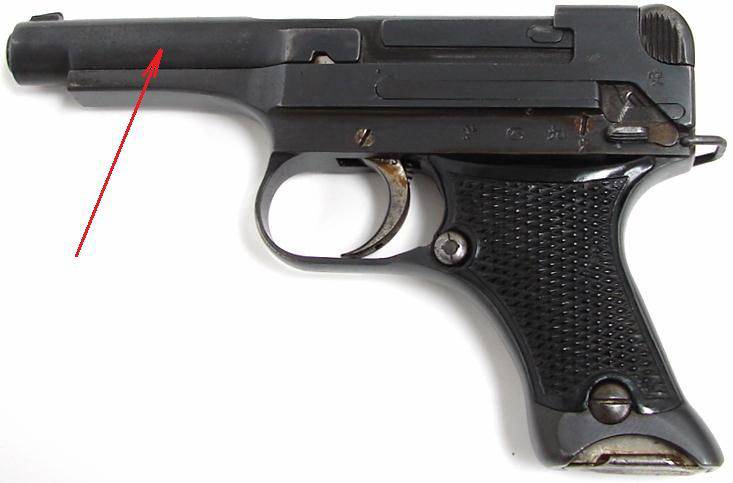
The shape of the side surfaces of the casing of the bolt around the barrel, in the pistols of the early production period, is rounded. The photo shows that the casing of the bolt in this part is somewhat sideways in relation to the frame of the gun.
The serial number printed on the frame of the gun consists, as a rule, of 4 digits.
The marks of the arsenal of Nagoya (figure 3 in the photo) and the manufacturer’s factory Nambu (figure 4) are marked on the right side of the frame between the number and the year of the weapon.
The shape of the trigger lever of this gun is different from the earliest. It is just straight and in the middle part has no protrusion. The projection remained only in its shank at the safety lever. This is also a characteristic feature of Nambu 94 pistols from an early release period. The hieroglyphs on the left side of the frame of the early pistols are located above the cheek of the handle, almost symmetrically relative to its center.
The second version of the Nambu 94 pistols are weapons released between February 1939 and August 1941 (marked 14.2 to 16.8).
The main difference of this variety is the feature of marking. The hieroglyphs of the markings on the left side of the frame have shifted and are located above the left cheek angle of the handle. The distance between the hieroglyphs has decreased.
The arsenal hallmarks of Nagoya and the Nambu enterprises have been rescheduled. They are placed below the release date of the weapon. In addition, the Nambu stamp is now located in front of the markings of the Nagoya Arsenal.
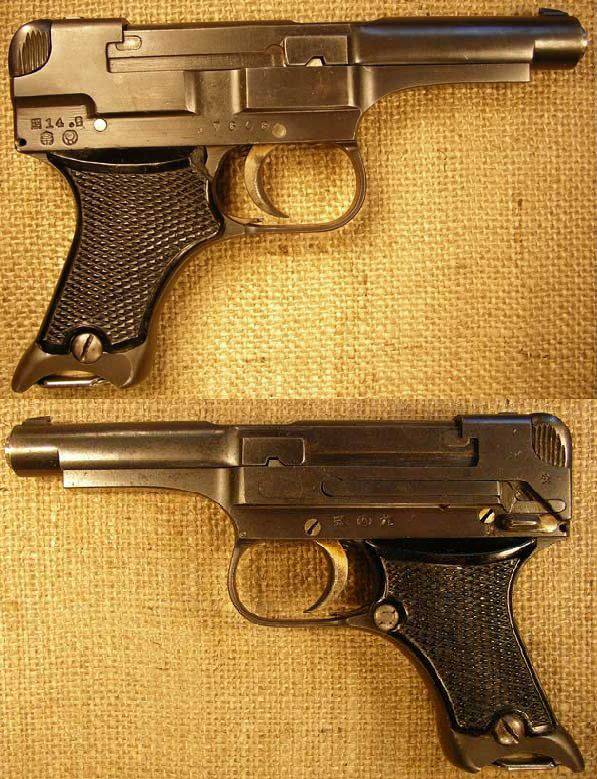
The first pistols of the second version still have a four-digit serial number, a rounded protruding shutter casing and a protruding rear part of the trigger lever.
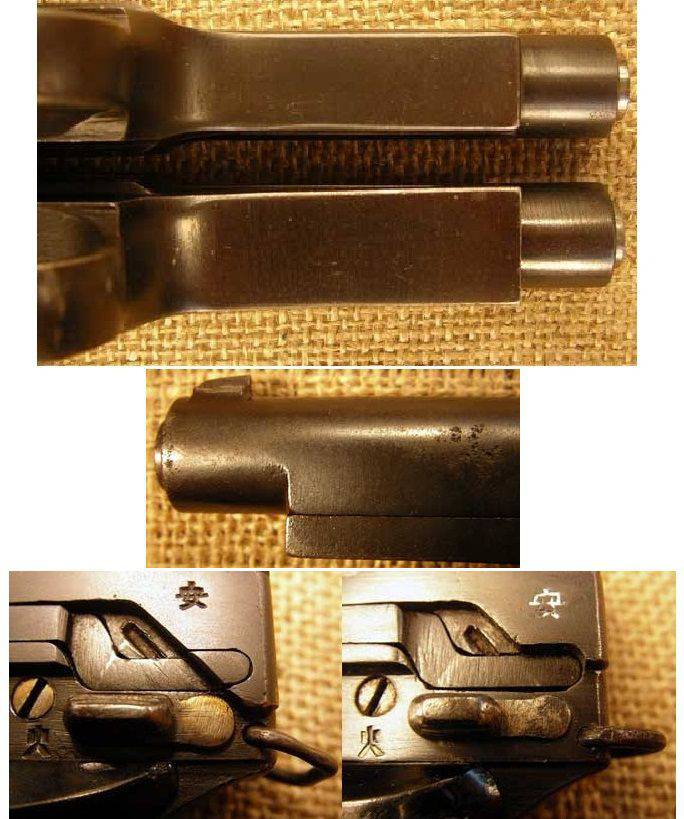
In April 1940 of the year (since the date of 15.4), the width of the frame has been increased. Now the casing shutter does not protrude above the frame and its rounded shape is changed - the shutter is now flat and is flush with the surface of the frame. The change also affected the trigger lever. Its back has become flat - without a ledge.
The manufacturing quality of the Nambu 94 pistols of the second type is quite acceptable.
The third version of the Nambu 94 pistols is a weapon released between August 1941 and December 1944 (marked in the interval between 16.8 and 19.12)
The Nambu 94 pistols of the third type clearly show the decline in Japanese industry during the Second World War.
After December 1941, the production of weapons with nickel-plated magazines stopped. The directories report that the highest known pistol number with nickel-plated magazine: 22401. Pistols with the release date of 17.1 were made already with simple blued shops.
After about the middle of the year 1942, there is a noticeable change in the intensity of the bluing of the surfaces of the weapon parts.
The bluish tint of the pistols varies from black and blue to bluish-rusty. Around this time, the first signs of deterioration in the quality of the assembly of pistols appear. Finishing details of weapons noticeably easier.
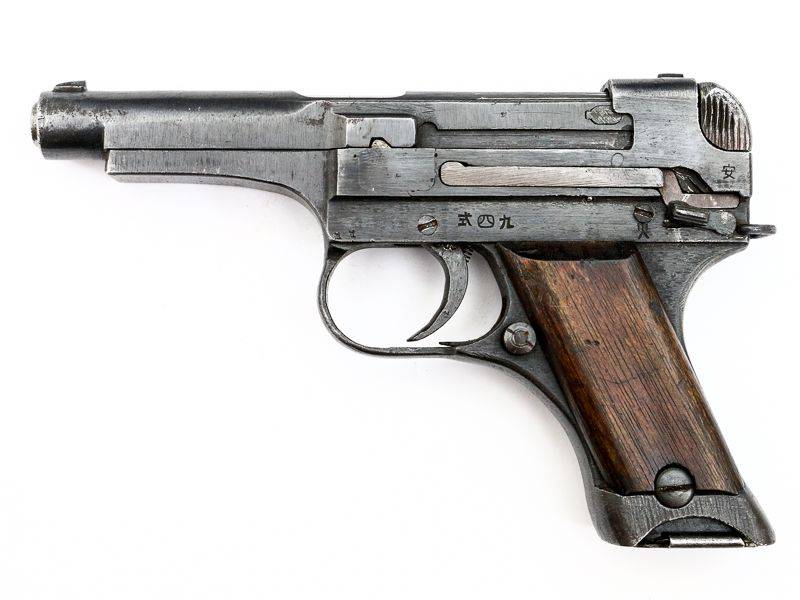
Around mid-May 1944, the plastic handle cheeks were replaced with smooth wooden cheeks without any notches.
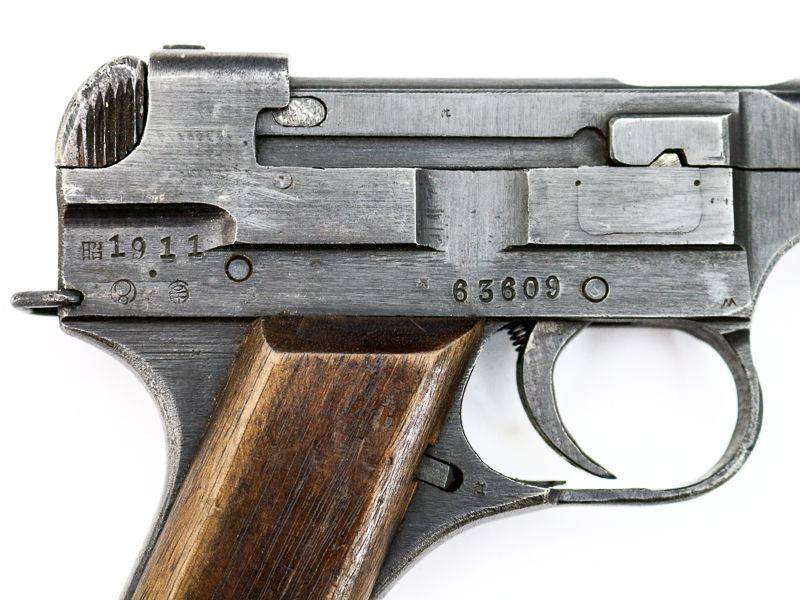
In earlier pistols, the plastic cheeks of the arms had a figured shape and covered the tail of the frame. The wooden cheeks were straight.
Such cheeks did not limit the turning of the safety lever down to the position when the lever could be removed from its socket. For this reason, it is not uncommon for owners of wooden-handled pistols to lose their safety lever, which, if not very carefully handled, simply fell out of the weapon.
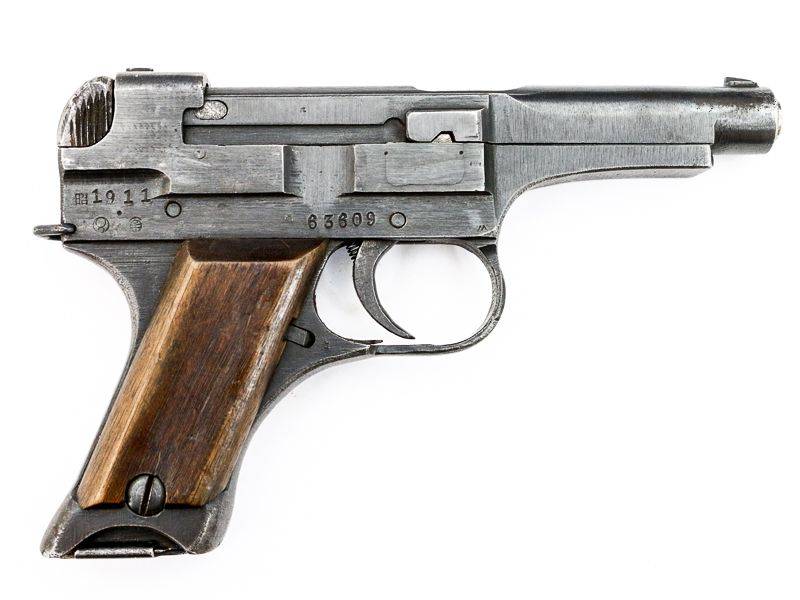
The quality of pistols by the end of the war falls sharply. The parts of the weapon show signs of rough machining with tools. Technological operations for grinding the frame, bolt and other parts of the weapon are almost abolished.
Nambu 94 pistols of the fourth variety, the so-called "Nambu off-date", this weapon with a marking in the interval between 18.6 - 18.8. These pistols are interesting because they were not manufactured at the Nambu facility.
In 1942, the Niikura plant, whose main activity was the manufacture aviation machine guns, idle without orders. In order to save employees and production, the plant management accepts blanks from the Nambu facility for approximately 2500 Nambu Type 94 pistols.
Pistols were fully assembled, but they were not stamped on them. After they were sent again to the enterprise Nambu, where they were examined and labeled. That is why there are about 2500 pistols with serial numbers in the range between 26000 - 28000. At this time, the Nambu Rifle Manufacturing Company released weapons with 38000 serial numbers.
The fifth type of Nambu pistols 94 should include weapons with wooden cheeks, released in 1945 year. An interesting feature was the change in the configuration of the store feeder's lead. The leash instead of a rectangular became round with a small square notch.
In January, 1945, the pistols were made with a bolt of the usual rounded shape. The highest serial number with a rounded back of the shutter, which lead researchers - 67459 (20.1).
Later, pistols are made with a square back part of the bolt. This is one of the characteristic signs of pistols of the fifth variety, in addition to the date of manufacture.
In the last months of the war, the quality of manufacturing and assembling Nambu 94 pistols became simply terrible, because at this time US aircraft were intensively destroying Japanese enterprises and the resources of the Land of the Rising Sun were severely depleted. The pistol was transformed not so much into a personal weapon of defense, but rather as a last resort not to surrender to the enemy and protect the honor of his uniform.
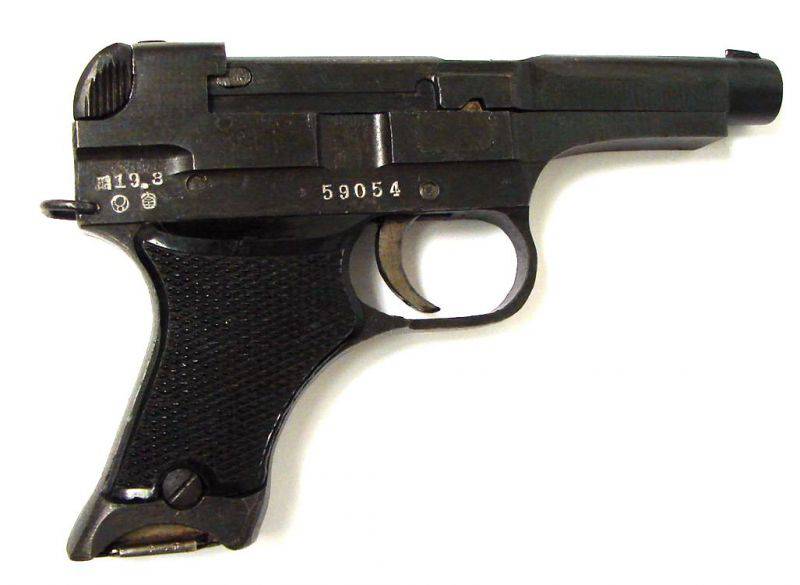
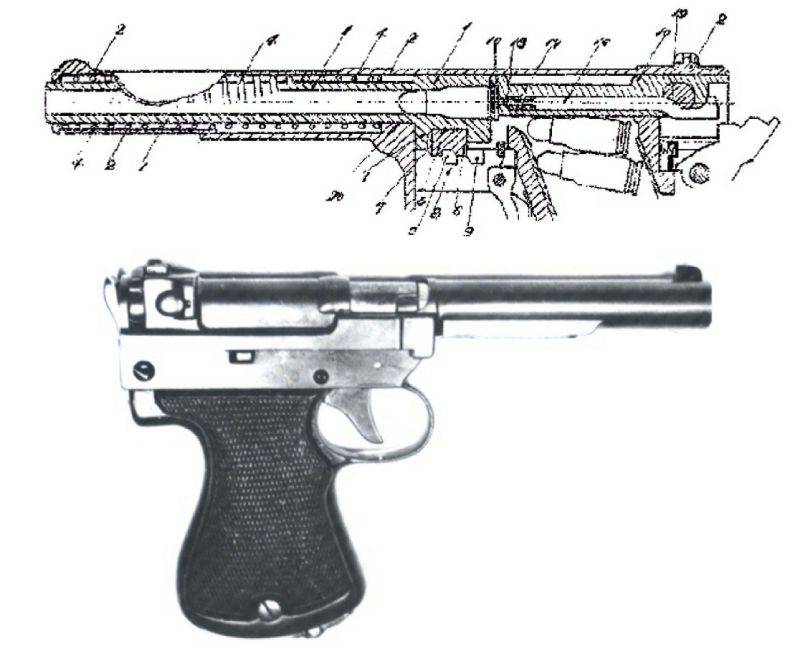
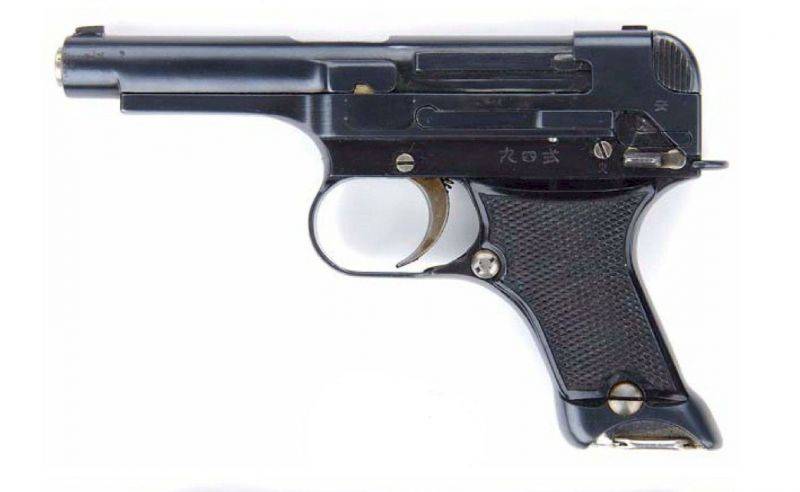
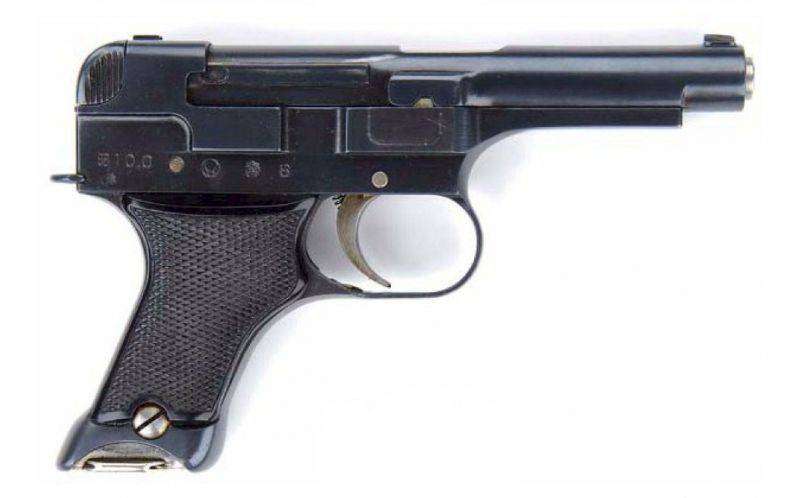

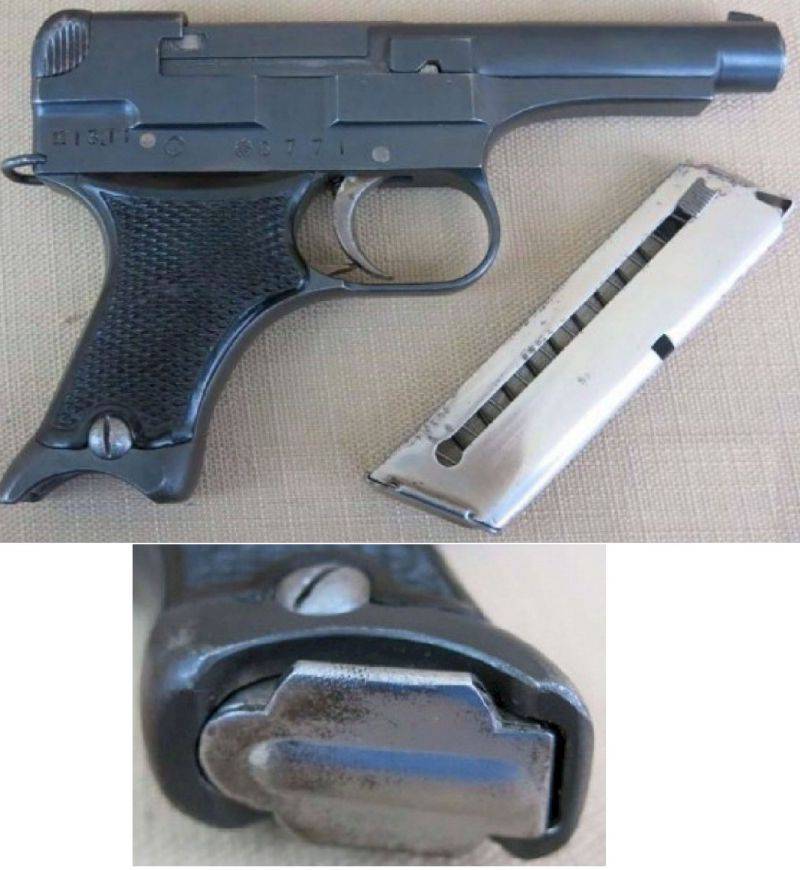
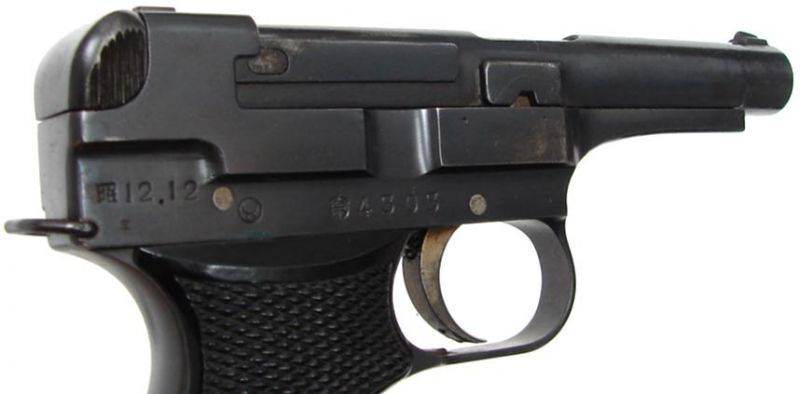
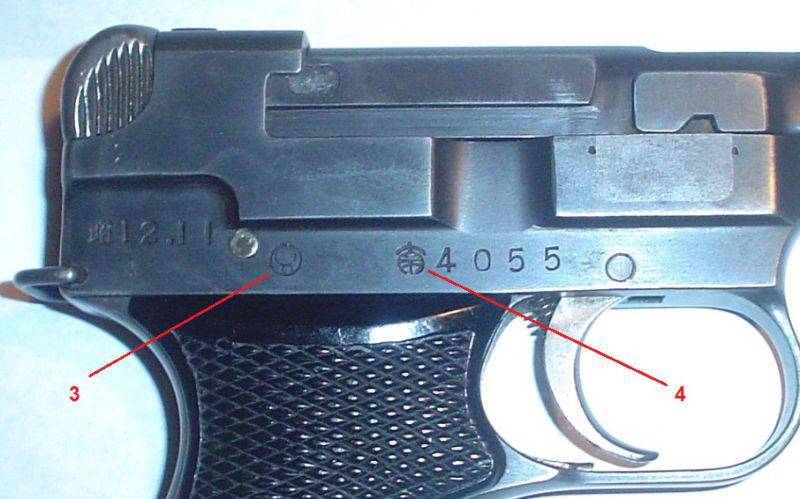
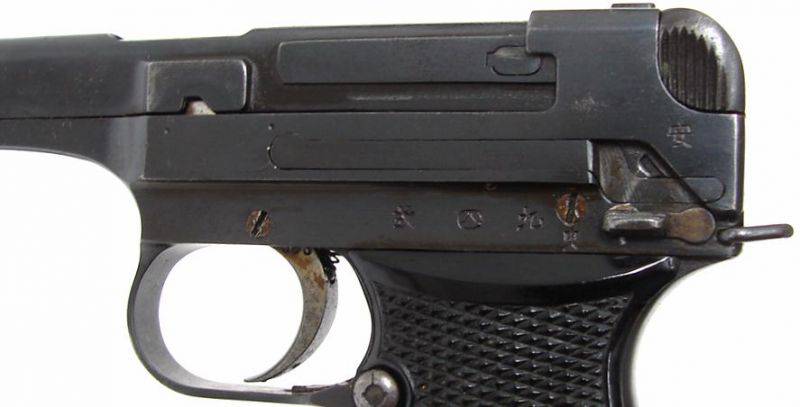
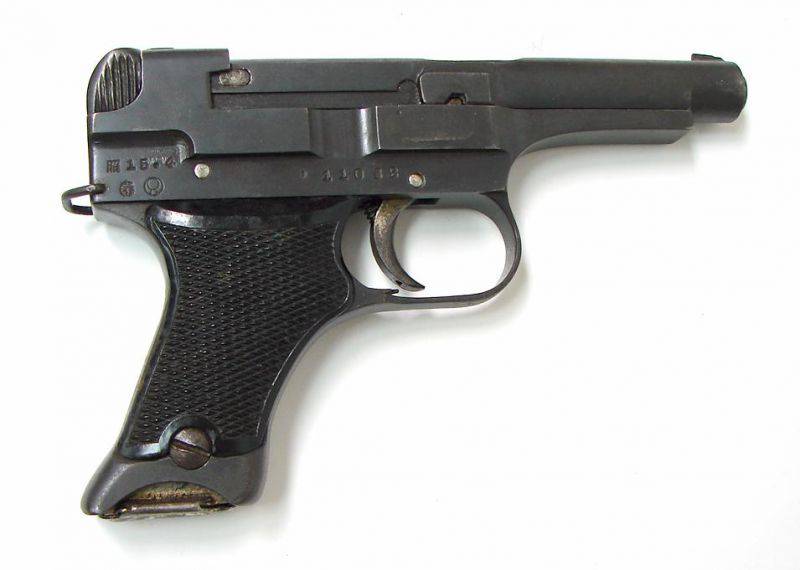
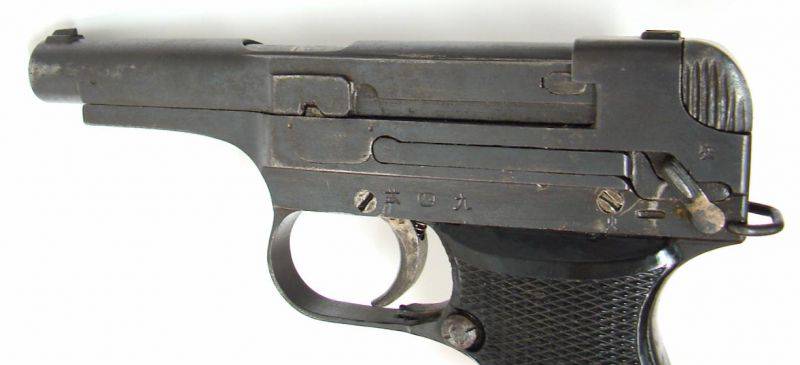
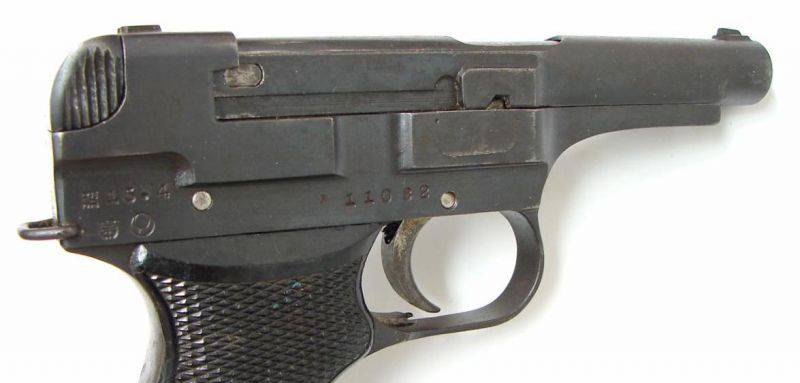
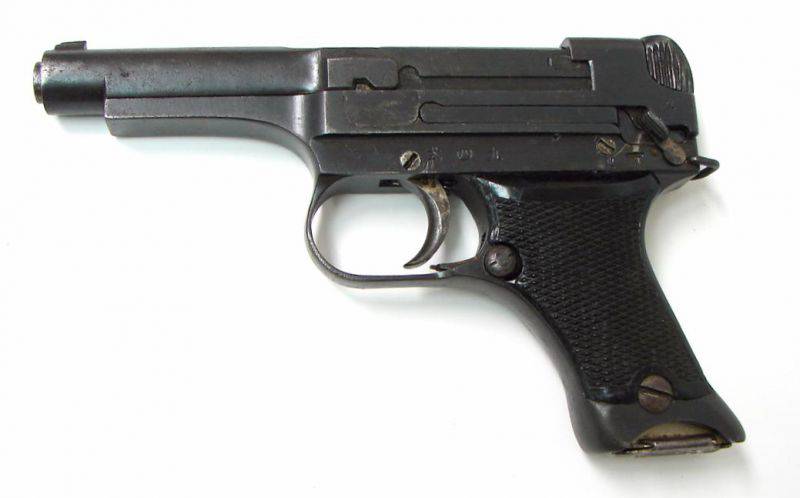
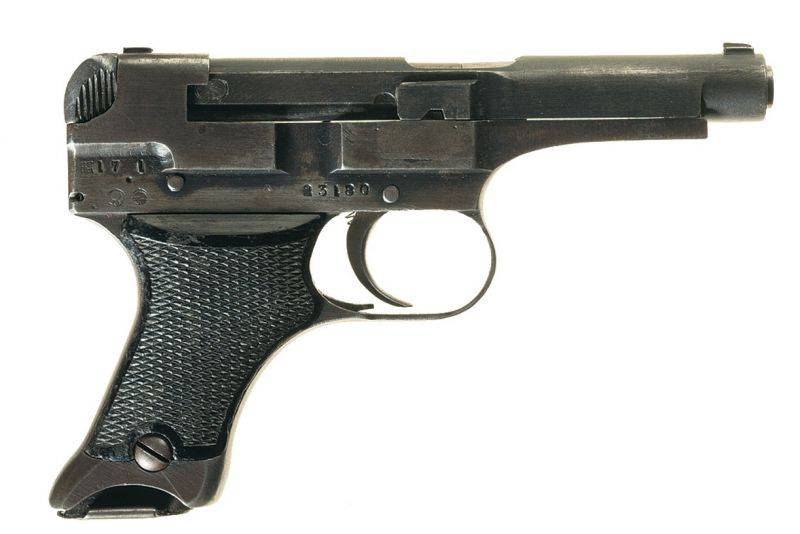
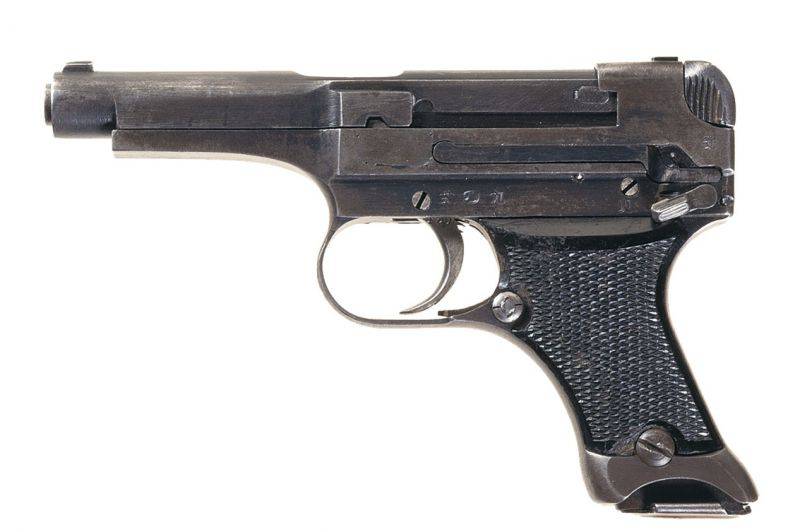
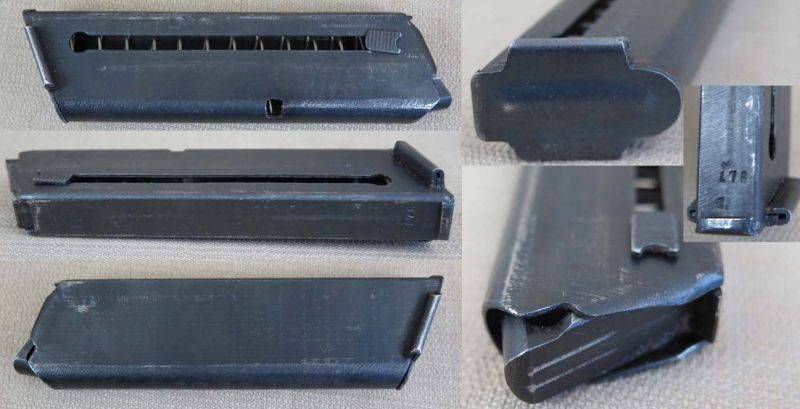
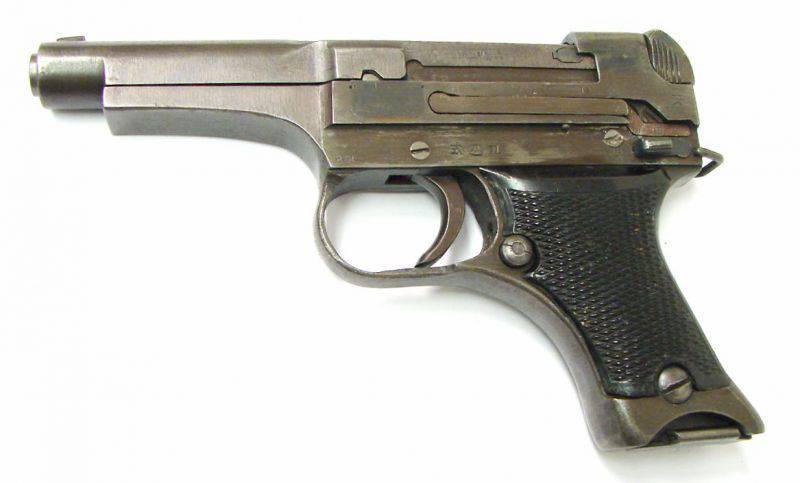
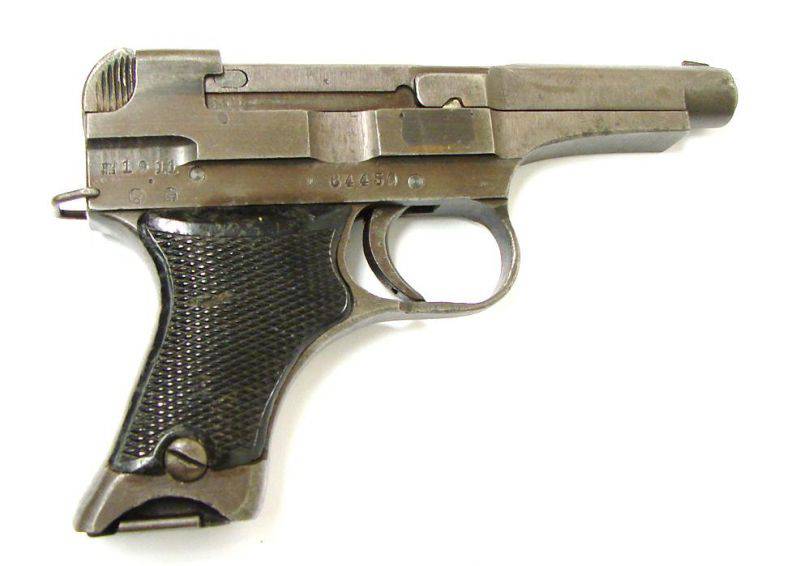
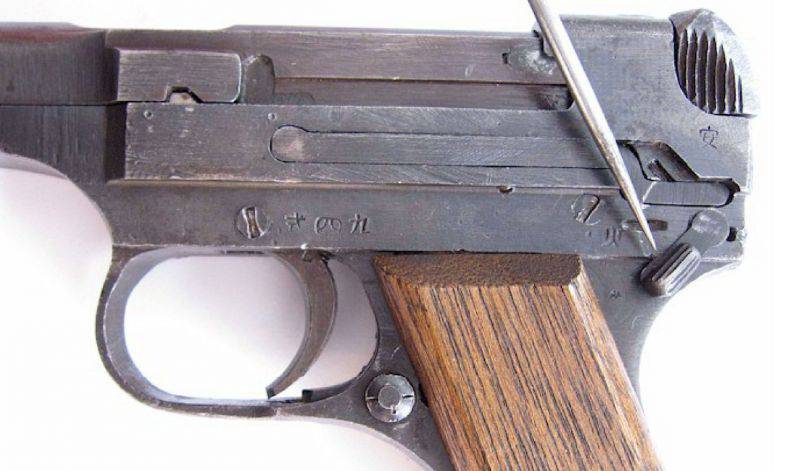
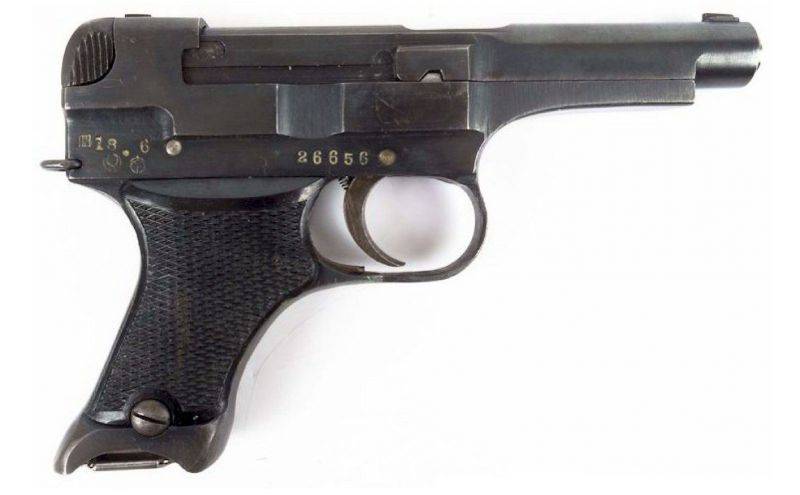
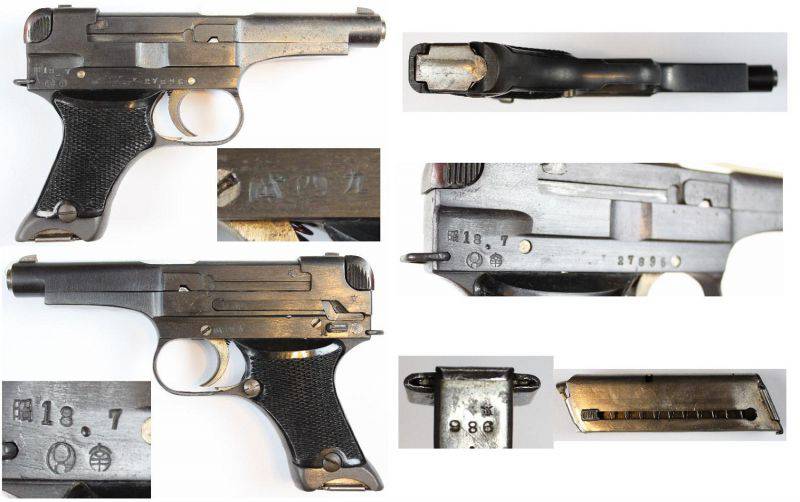
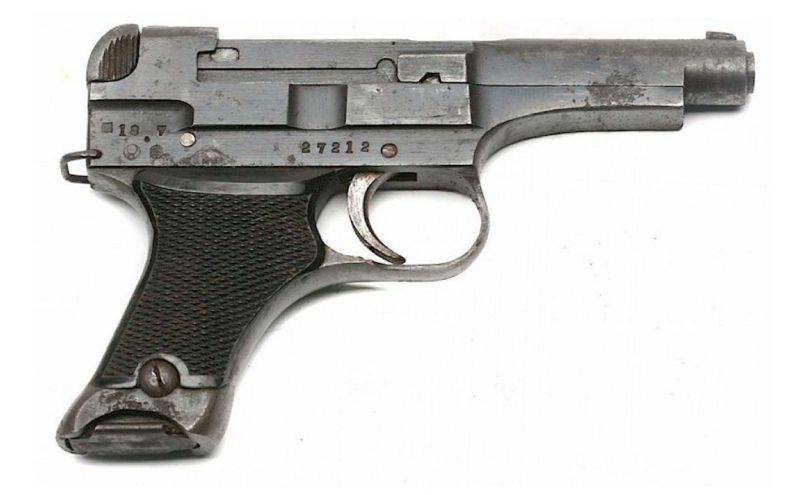
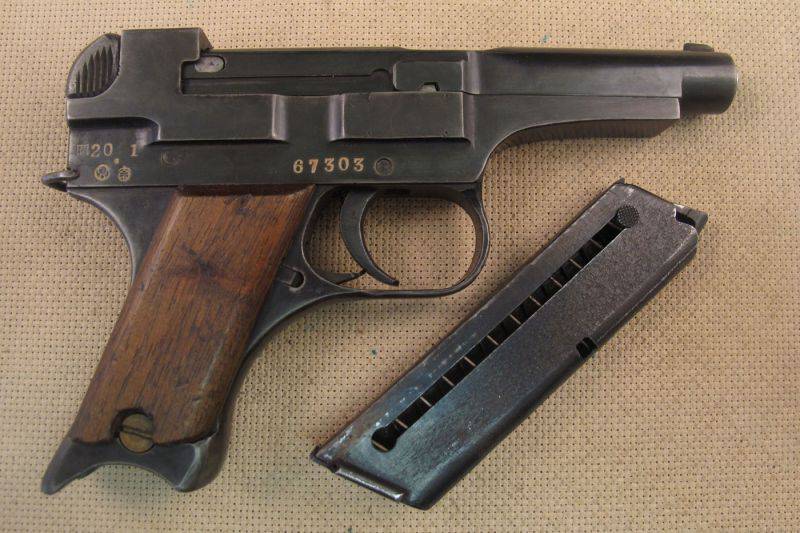
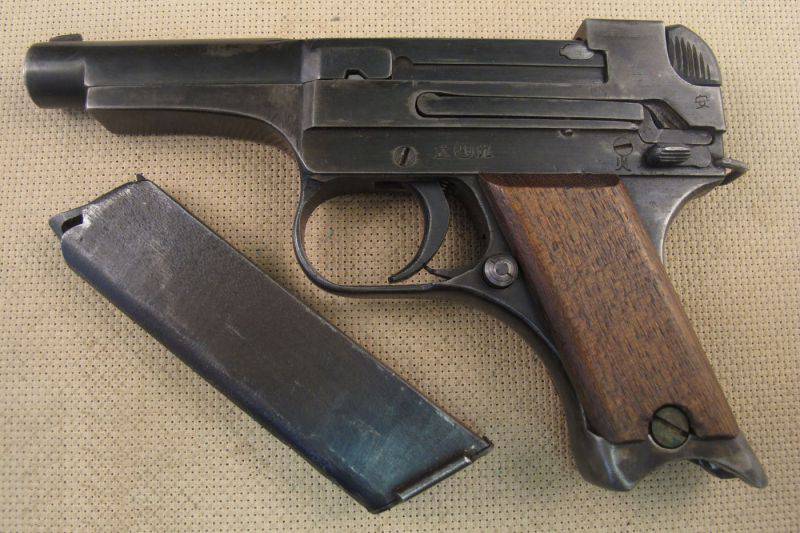
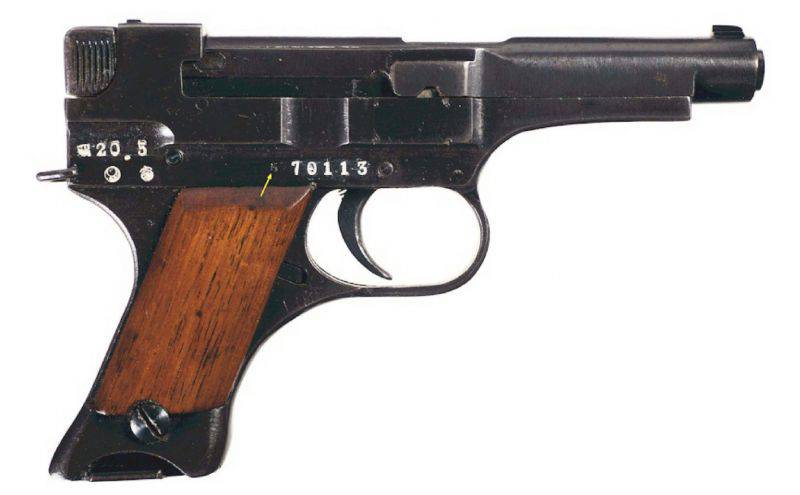
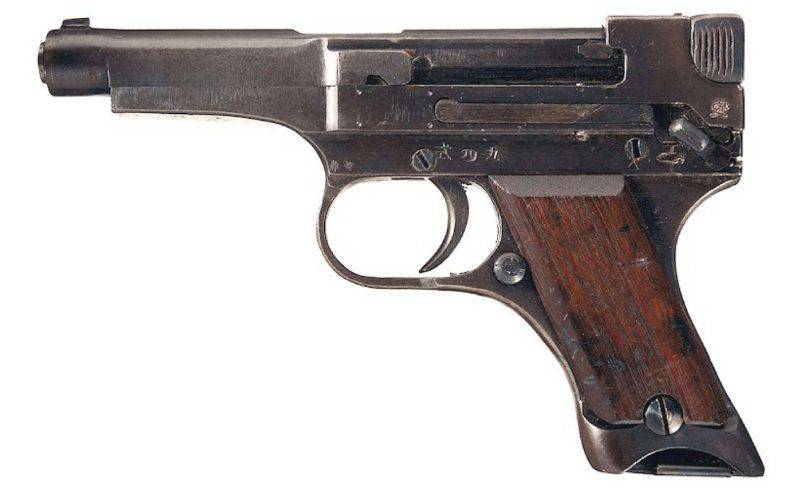
Information